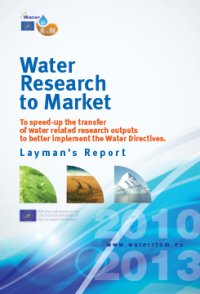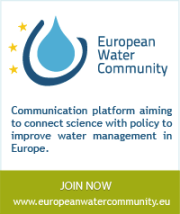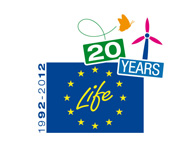plasTEP
| Output characterisation | ||
| OUTPUT SENTENCE | Dissemination and fostering of plasma based technological innovation for environment protection in the Baltic Sea region | |
| OUTPUT TYPE | prototype | |
| WATER TOPIC | Quality of natural systems | |
| KEYWORDS | Plasma technology, pollution control, kerosene, water surface | |
| MARKET NEED TAILORED | During the last decade shipping has steadily increased, reflecting intensifying co-operation and economic prosperity around the Baltic Sea region. An average of 2,000 ships are at sea each day, including 200 tankers carrying oil or other potentially harmful products. It is estimated that the transportation of goods by sea will double by 2017 in the Baltic region. General cargo and container traffic is expected to triple, and oil transportation may increase by 40%. The expansion and construction of oil terminals on the shores of the Gulf of Finland and regional economic growth may lead to even higher increases in shipping. Increasing maritime transportation threatens fragile ecosystems and the livelihoods of many people who depend on the sea. Increased shipping is accompanied with increased operation in Baltic Sea ports. As a result frequency of small leakages of oil and bilge water become higher, most of all in the port and docs area. | |
| OUTPUT DESCRIPTION | The aim of the Work Package 6 of the PlasTEP project was developing a prototype of mobile device for destruction of oil and oil-type leakages in ports of the Baltic Sea using plasma. The concept of the entire device is based on the module construction. All modules are fixed on the platform equipped with floats. The following main modules has been developed: – power supply module – which provides proper voltage and current to all electrical components of the device, including pumps, valves, rotors, high voltage sections of plasma modules, – first plasma module – the role of which is using microwave plasma for conversion of oil slick polluting sea surface to gaseous hydrocarbons, – second plasma module with filters – it has to decompose gaseous hydrocarbons transported from the first plasma section into harmless products. On the platform, besides above mentioned modules, also other element of the device are installed, such us high pressure flask with nitrogen delivering gas to plasma modules, and drum separator for oil-water separation. | |
| STATE OF DEVELOPMENT |
| |
| INNOVATIVE ASPECTS AND ADVANTAGES | Since the only available way of destruction of such waste is incineration, pollution of air in the Baltic Sea region with combustion products increases. Moreover, incineration is energetically inefficient and expensive. We propose a new mobile device as a tool for removal and destruction of all kind of pollutions discharges from ships and operating installations. Using mobile devices which could destroy oil and oil-kind slicks directly on the sea surface would much decrease both energy consumption and air pollution. | |
| INTELLECTUAL/INDUSTRIAL PROPERTY RIGHTS | - Szewalski Institute of Fluid-Flow Machinery, Gdańsk, Poland – as constructors of microwave plasma module, - West Pomeranian University of Technology, Szczecin, Poland – as constructors of power supply, Leibniz-Institut für Plasmaforschung und Technologie e.V., Greifswald, Germany – as constructors of DBD plasma module | |
| TRANSFERABILITY | YES transferable | |
| POTENTIAL USERS/CLIENTS | Oil skimmers producers, companies combating oils-slicks, port management administrations | |
| BUSINNESS CASE | No | |
| Estimation of risks | ||
| INNOVATIVE DISADVANTAGE | NON listed | |
| EVALUATION OF RISKS FOR OUTPUT USERS | Some risks were eveluated in the REMAS sheet, however the general evaluation is positive | |
| ECONOMICAL RISKS | obtaining addtional donations | |
| TECHNICAL RISKS | Additional translation might be required | |
| MARKET RISKS | Changebility of market needs (in relation to the output usefulness) | |
| SOCIAL RISKS | Negociations with end-users, partners, etc. | |
| Steps ahead | ||
| NEXT STEPS TO ACHIEVE THE STATUS 'READY TO USE' | Development of the prototype by improving oil collection, transfer of oil into the microwave plasma zone and adding remote control and propellers. | |
| INVOLVEMENT OF THE OWNER FOR THE NEXT STEPS | YES | |
| TYPE OF PARTNER FOR THE NEXT DEVELOPMENTS | - | |
| TASKS TO BE PERFORMED | Adidtional dissemination Obtaining source of additional financing Development of the prototype by improving oil collection Transfer of oil into the microwave plasma zone and adding remote control and propellers. | |
| COLLABORATION DETAILS |
Dr. Mirosław Dors, Szewalski Institute of Fluid-Flow Machinery, Gdańsk, Poland, E-mail: mdors@imp.gda.pl, Project contact: Project manager,
Dipl. Ing. Alexander Schwock
Fon: + 49 (0)3834 550 102
Fax: + 49 (0)3834 550 111
E-Mail: schwock(at)technologiezentrum.de
| |
| Estimation of ressources | ||
| RESOURCES FOR NEXT STEPS | - financing development of the prototype - testing pool | |
| FORESEEN COSTS FOR NEXT STEPS | financial support required for development and dissemination activities | |
| Contact | ||
| TECHNICAL CONTACT | Dr. Mirosław Dors, Szewalski Institute of Fluid-Flow Machinery, Gdańsk, Poland, E-mail: mdors@imp.gda.pl, Project contact: Project manager, Dipl. Ing. Alexander Schwock Fon: + 49 (0)3834 550 102 Fax: + 49 (0)3834 550 111 E-Mail: schwock(at)technologiezentrum.de | |
| COUNTRY | DENMARK | |
| WEBSITE | http://www.plastep.eu/ | |
| WATER RTOM CONTACT | ola.m@gfw.pl | |
| Background | ||
| PROJECT NAME | Dissemination and fostering of plasma based technological innovation for environment protection in the Baltic Sea region | |
| PROJECT ACRONYM | PlasTEP | |
| PROJECT DESCRIPTION | The aim of the Work Package 6 of the PlasTEP project was developing a prototype of mobile device for destruction of oil and oil-type leakages in ports of the Baltic Sea using plasma. The concept of the entire device is based on the module construction. All modules are fixed on the platform equipped with floats. The following main modules has been developed: – power supply module – which provides proper voltage and current to all electrical components of the device, including pumps, valves, rotors, high voltage sections of plasma modules, – first plasma module – the role of which is using microwave plasma for conversion of oil slick polluting sea surface to gaseous hydrocarbons, – second plasma module with filters – it has to decompose gaseous hydrocarbons transported from the first plasma section into harmless products. On the platform, besides above mentioned modules, also other element of the device are installed, such us high pressure flask with nitrogen delivering gas to plasma modules, and drum separator for oil-water separation. | |
| LEADER | Mirosław Dors, Szewalski Institute of Fluid-Flow Machinery, Gdańsk, Poland, E-mail: mdors@imp.gda.pl, Project contact: Project manager, Dipl. Ing. Alexander Schwock Fon: + 49 (0)3834 550 102 Fax: + 49 (0)3834 550 111 E-Mail: schwock(at)technologiezentrum.de | |
| COUNTRIES INVOLVED | Germany(leader), Denmark, Finland, Latvia, Lithuania, Sweden, Poland Estonia | |
| PROJECT LOCATION | Germany | |
| FUNDING ORGANISATION | Baltic Sea Region Programme 2007-2013 |




